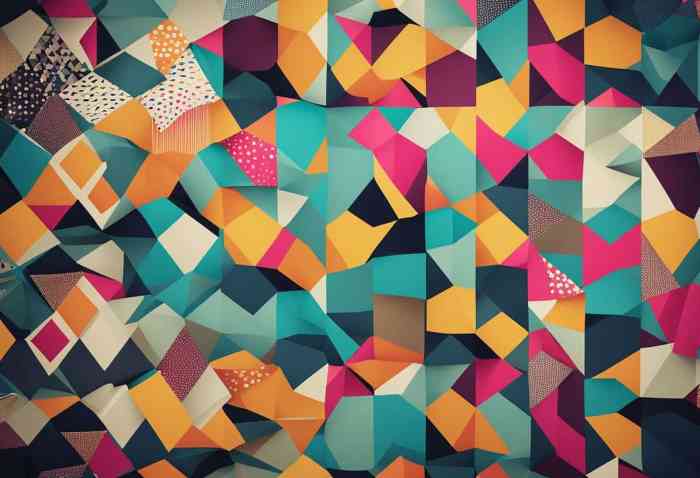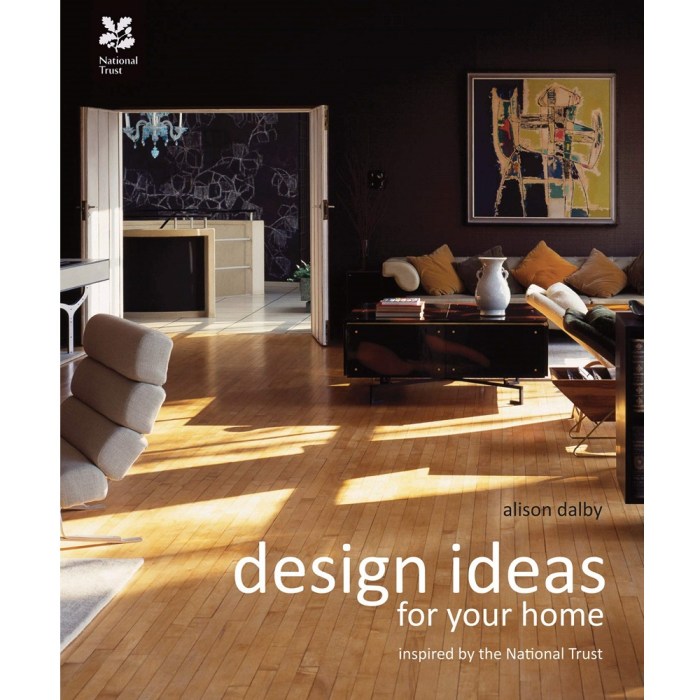Exploring Design Ideas: Unleashing Creativity in Every Stroke
Embark on a journey through the realm of design ideas, where creativity knows no bounds and innovation thrives. From brainstorming to incorporating user feedback, this topic delves into the essence of design inspiration and execution with a blend of expertise and imagination.
Learn about techniques, sources of inspiration, and the pivotal role of feedback in refining design ideas for a truly captivating design experience.
Brainstorming Design Ideas
Brainstorming design ideas is a crucial step in the creative process, as it allows for the generation of innovative and unique concepts. By tapping into different techniques and fostering a diverse environment, designers can unlock a wealth of possibilities.
Techniques for Generating Design Ideas
- Mind Mapping: Create a visual representation of interconnected ideas to explore different design paths.
- Word Association: Start with a single word related to the project and jot down any associated ideas that come to mind.
- Brainwriting: Have team members write down their ideas independently before sharing and building upon each other's thoughts.
- Rapid Prototyping: Quickly create rough drafts or sketches to visualize design concepts and iterate on them.
Examples of Successful Design Idea Brainstorming Sessions
- Apple's Product Development: Apple's design team holds regular brainstorming sessions where they focus on user experience and simplicity, leading to iconic products like the iPhone.
- IDEO's Design Thinking Workshops: IDEO's multidisciplinary teams engage in collaborative brainstorming sessions to tackle complex design challenges and come up with innovative solutions.
The Importance of Diversity in Design Idea Generation
Having a diverse group of individuals with varied backgrounds and perspectives is essential for generating a wide range of design ideas. Different viewpoints can lead to more creative solutions and help avoid groupthink, where everyone thinks alike and limits the potential for innovation.
Research and Inspiration

Research plays a crucial role in inspiring new design ideas. By delving into various sources, designers can uncover unique concepts, innovative techniques, and fresh perspectives that can fuel their creativity. Let's explore how research can be a powerful source of inspiration for design.
Exploring Diverse Sources
Researching beyond typical sources like Pinterest can open up a world of inspiration. Visiting art galleries, museums, and exhibitions can expose designers to a wide range of artistic styles, historical movements, and cultural influences. Diving into literature, music, nature, and even science can also provide unexpected ideas and insights for design projects.
- Art Galleries and Museums: Studying classical art pieces or contemporary installations can spark new design directions.
- Literature and Music: Drawing inspiration from poetry, novels, or musical compositions can add depth and meaning to design concepts.
- Nature and Science: Exploring patterns, textures, and structures in the natural world can inspire innovative design solutions.
By immersing themselves in a diverse range of sources, designers can cultivate a rich tapestry of ideas that can breathe life into their projects.
Historical Design Elements Influence
Looking back at historical design elements can also influence modern design ideas. By studying architectural styles, fashion trends, graphic design movements, and decorative arts from the past, designers can reinterpret and adapt these elements to create contemporary designs with a touch of nostalgia or homage.
- Art Deco Revival: Reviving the geometric shapes, bold colors, and luxurious materials of the Art Deco era can infuse modern designs with a sense of glamour and sophistication.
- Mid-Century Modern: Incorporating sleek lines, organic forms, and minimalist aesthetics from the mid-century modern movement can bring a timeless elegance to contemporary design projects.
- Vintage Typography: Drawing inspiration from vintage typography styles can add a nostalgic charm and retro vibe to branding and graphic design work.
Mood Boards and Visual References
When it comes to design inspiration, creating mood boards and using visual references play a crucial role in shaping ideas and concepts. Mood boards are a collection of images, textures, colors, and other visual elements that help designers convey a particular style, theme, or mood for a project.
Visual references, on the other hand, are existing images or designs that serve as a source of inspiration and guidance throughout the design process.
Creating Mood Boards
Creating a mood board involves gathering various visual elements such as images, color swatches, fabric samples, typography samples, and textures that resonate with the desired aesthetic or theme of the project. These elements are then arranged and presented in a cohesive and visually appealing manner on a physical or digital board.
Mood boards help designers explore different visual directions, establish a design language, and communicate their ideas effectively.
Role of Visual References
Visual references serve as a source of inspiration and guidance for designers by providing examples of successful design solutions, trending styles, and innovative concepts. By studying visual references, designers can analyze different approaches, techniques, and visual elements that can be incorporated into their own projects.
Visual references help designers stay informed about current design trends and push the boundaries of their creativity.
Tips for Using Mood Boards Effectively
- Start by defining the purpose and theme of your project to guide the selection of visual elements for the mood board.
- Curate a diverse range of images, colors, textures, and typography samples to explore different design possibilities.
- Arrange the visual elements on the mood board in a cohesive and visually appealing way to convey the desired aesthetic or mood.
- Use the mood board as a reference point throughout the design process to ensure consistency and alignment with the initial concept.
- Share the mood board with clients, team members, or stakeholders to communicate your design ideas effectively and gather feedback for further refinement.
Incorporating User Feedback

When it comes to improving design ideas, user feedback plays a crucial role in providing valuable insights that can lead to successful iterations. By actively listening to users' opinions, designers can tailor their designs to better meet the needs and preferences of their target audience.
Influencing Design Ideas
User feedback can influence design ideas by highlighting areas that need improvement, pointing out usability issues, suggesting new features, or even validating existing design choices. For example, if users consistently express difficulty navigating a website, designers can reevaluate the site's layout and navigation structure to enhance user experience.
Successful Design Iterations
- Apple's iPhone design evolution: Apple continuously incorporates user feedback to refine and enhance their iPhone designs. Features like Face ID, improved camera capabilities, and the removal of the home button were all influenced by user feedback gathered from previous models.
- Google's Material Design: Google regularly collects user feedback on their Material Design principles and guidelines to ensure that their design system remains intuitive and user-friendly across different devices and platforms.
Collecting and Incorporating Feedback
Strategies for collecting and incorporating user feedback into the design process include:
- Surveys and questionnaires: Designers can create surveys to gather specific feedback on design elements, usability, and overall user satisfaction.
- User testing: Observing users interact with prototypes or mockups can provide valuable insights into user behavior and preferences.
- Feedback forms: Including feedback forms on websites or apps allows users to easily share their thoughts and suggestions for improvement.
- Engaging with user communities: Participating in online forums, social media groups, or user feedback sessions can help designers gather direct feedback from their target audience.
Ultimate Conclusion
As we conclude this exploration of design ideas, it's evident that the key to impactful design lies in the fusion of creativity and practicality. Let your imagination soar, and may your design ideas shape the world in ways beyond imagination.
Detailed FAQs
How important is diversity in design idea generation?
Diversity plays a crucial role in design idea generation as it brings different perspectives and insights to the table, leading to more innovative and inclusive solutions.
What are some unconventional sources of design inspiration?
Unconventional sources of design inspiration can include nature, architecture, music, and even scientific concepts, offering unique and refreshing ideas.
How can mood boards enhance design concepts?
Mood boards visually compile design elements, color schemes, and textures to provide a holistic view of the intended design direction, aiding in effective communication and visualization.
What role does user feedback play in refining design ideas?
User feedback acts as a valuable compass in guiding design iterations, ensuring that the final product resonates with the intended audience and meets their needs effectively.




